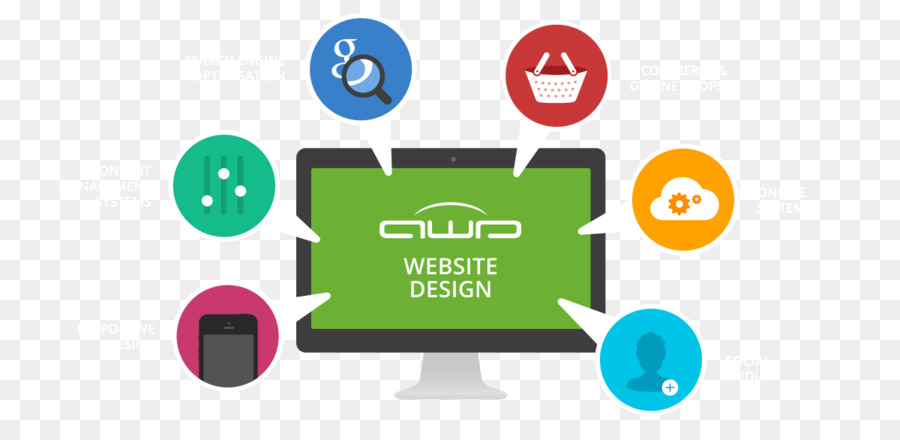Eager To Uncover How Internet Site Layout Has Transformed In Time? Dive Into The Evolution From Simpleness To User-Focused Experiences.
Eager To Uncover How Internet Site Layout Has Transformed In Time? Dive Into The Evolution From Simpleness To User-Focused Experiences.
Blog Article
Posted By-Johansen Wren
In the past, websites were easy and focused on info. Navigation was straight, and design was for desktop computers. Now, user experience is vital. Information guides layouts for very easy navigating. Receptive layouts fit different gadgets. Today, dark setting decreases strain, and minimal menus enhance navigating. Interactive attributes engage individuals, and bold visuals attract attention. AI assimilation boosts interaction. See exactly how layout has actually developed to improve your on the internet journey.
Early Days of Website Design
In the very early days of website design, simplicity reigned supreme. Sites were standard, with restricted colors, fonts, and formats. The focus was on offering details as opposed to fancy visuals. Individuals accessed the internet via slow dial-up links, so rate and capability were crucial.
Navigation menus were straightforward, typically situated on top or side of the page. Internet sites were developed for desktop computers, as mobile browsing had not been yet widespread. Material was king, and designers focused on easy readability over intricate style elements.
HTML was the main coding language made use of, and developers had to function within its constraints. Animations and interactive features were marginal contrasted to today's requirements. Sites were static, with little vibrant web content or tailored user experiences.
Surge of User-Focused Layout
With the advancement of site layout, a shift in the direction of user-focused style principles has actually ended up being significantly famous. Today, developing websites that prioritize user experience is important for involving visitors and attaining company goals. User-focused style entails recognizing the needs, choices, and habits of your target audience to tailor the site's layout, web content, and features appropriately.
https://how-much-is-search-engine39506.bloginder.com/30510212/crafting-interesting-marketing-text-for-your-pay-per-click-campaigns carry out comprehensive research study, such as customer surveys and use testing, to collect understandings and feedback directly from individuals. pop over to this website -driven strategy assists in creating user-friendly navigating, clear calls-to-action, and aesthetically appealing user interfaces that resonate with visitors. By putting the user at the center of the layout process, sites can deliver a more personalized and satisfying experience.
Responsive style has actually also emerged as a vital element of user-focused layout, guaranteeing that web sites are maximized for different tools and display sizes. This flexibility boosts access and use, accommodating the diverse means users connect with web sites today. Fundamentally, the surge of user-focused style symbolizes a change towards creating digital experiences that focus on the needs and assumptions of completion individual.
Modern Trends in Website Design
Check out the most recent fads forming web design today. One noticeable pattern is dark mode design, using a streamlined and contemporary look while decreasing eye pressure in low-light settings. Another crucial fad is minimalist navigation, streamlining menus and improving customer experience by concentrating on essential elements. Incorporating micro-interactions, such as computer animated buttons or scrolling impacts, can develop a much more engaging and interactive web site. Receptive style remains vital, ensuring smooth individual experiences across different gadgets. Furthermore, using bold typography and asymmetrical designs can include visual rate of interest and accentuate specific web content.
Integrating AI technology, like chatbots for consumer support or personalized recommendations, enhances customer engagement and simplifies processes. Accessibility has also become a considerable pattern, with designers prioritizing comprehensive design techniques to accommodate varied customer needs. Embracing sustainability by enhancing site efficiency for rate and effectiveness is one more arising fad in website design. Teaming up with individual comments and data analytics to iterate and boost style continuously is important for remaining appropriate in the ever-evolving electronic landscape. By welcoming these modern-day fads, you can create a visually enticing, user-friendly website that reverberates with your target market.
Verdict
As you review the advancement of site design from the early days to currently, you can see exactly how user-focused layout has actually become the driving force behind contemporary trends.
Welcome the trip of modification and adaptation in website design, always maintaining the user experience at the center.
Remain present with the latest fads and innovations, and never quit progressing your approach to create visually stunning and straightforward websites.
Advance, adapt, and produce - the future of website design remains in your hands.
